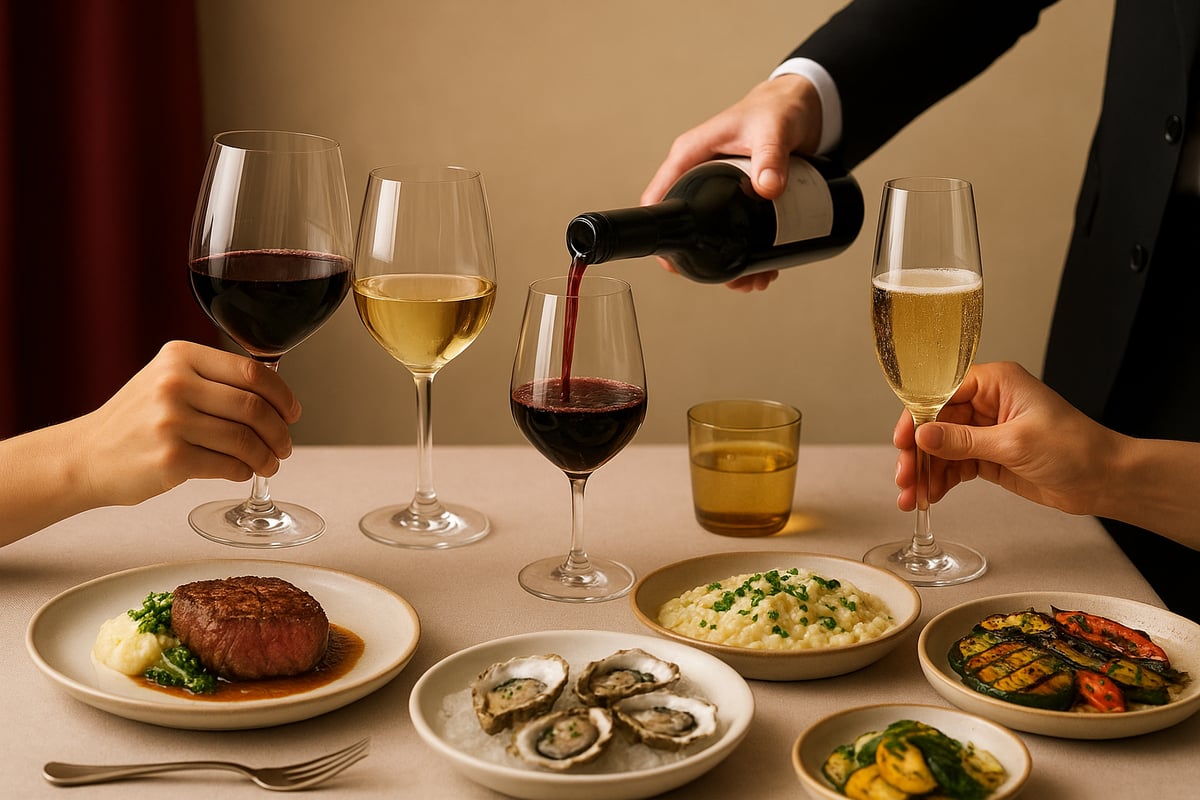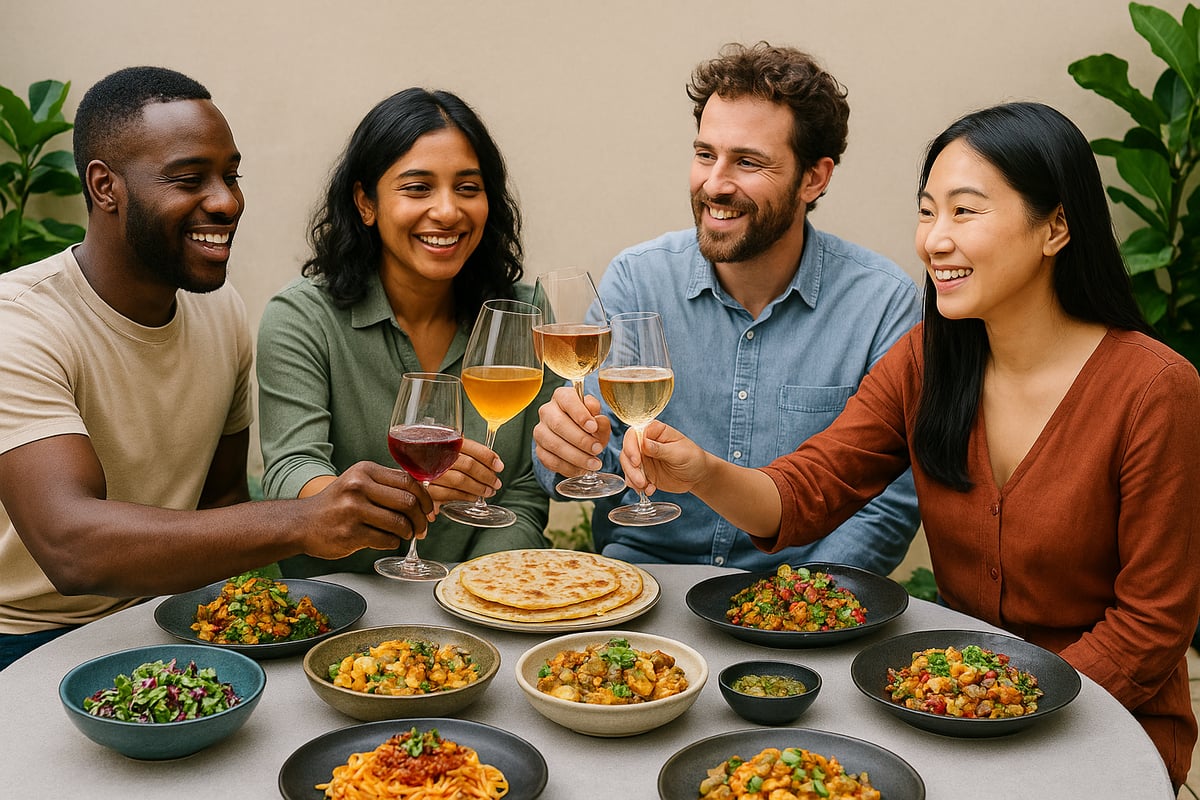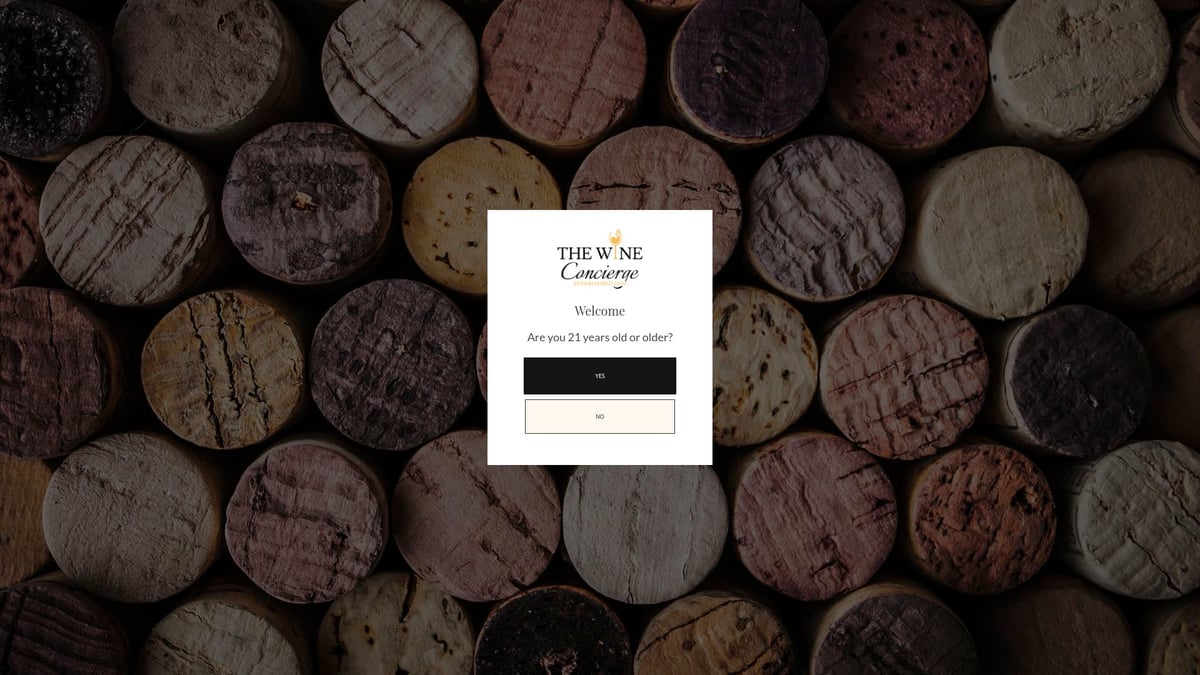Essential Food Wine Pairing Guide: Expert Tips for 2025
Unlock unforgettable dining experiences in 2025 with the art of food wine pairing. Imagine every meal—whether a cozy weeknight dinner or a grand celebration—transformed into a memorable event by simply choosing the right wine for your dish.
This essential guide demystifies food wine pairing, blending expert-backed strategies with practical, easy-to-follow tips and the latest recommendations for perfect matches this year. You’ll discover the fascinating science behind pairing, timeless rules that always work, trendy new combinations, and common mistakes to avoid.
Ready to elevate every bite and sip? Dive in, experiment, and master food wine pairing with confidence.
The Science of Food and Wine Pairing
Unlocking the secrets of food wine pairing starts with understanding the chemistry at work between what’s in your glass and what’s on your plate. Why do some combinations sing while others fall flat? The answer lies in the interplay of wine’s core components with the flavors and textures of your meal. Let’s break down what’s happening behind the scenes, so you can start making smarter, more delicious choices every time you pour.

Understanding Key Wine Components
Every successful food wine pairing starts with the basics: acidity, tannins, sweetness, body, alcohol, umami, and salt. Each of these wine traits interacts with food in specific ways—sometimes harmonizing, sometimes clashing.
Acidity is the backbone of many wines. High-acid wines like Sauvignon Blanc or Chianti brighten up rich, fatty foods. Think of how a zesty white cuts through creamy risotto or fried chicken, refreshing your palate with every sip.
Tannins are those grippy, mouth-drying sensations found in reds like Cabernet Sauvignon and Syrah. These compounds bind with proteins and fats, softening the wine and making meat taste even more savory. That’s why a bold red with steak is such a classic food wine pairing.
Sweetness in wine is a powerful tool. Off-dry whites like Riesling balance spicy or salty dishes—imagine a glass alongside Thai green curry. When pairing with dessert, always match the sweetness level, or the wine may seem bitter.
Body refers to the weight and texture of a wine. Light-bodied wines pair best with delicate dishes, while fuller-bodied wines need richer foods. A heavy Cabernet with poached fish? Not ideal. Match weight to weight for balance.
Alcohol levels can amplify the heat in spicy foods. For dishes with a kick, lower-alcohol wines are your friend. High-alcohol choices can make spice seem overwhelming.
Umami and salt are wild cards. Umami-rich foods like mushrooms or soy sauce can make tannic wines taste harsh, while salt softens tannins and makes wine feel smoother.
Here’s a quick table for reference:
| Wine Component | Food Interaction Example |
|---|---|
| Acidity | Cuts fat, refreshes palate |
| Tannins | Binds protein/fat, enhances meat flavors |
| Sweetness | Balances spice/salt, needs dessert match |
| Body | Pair weight with dish weight |
| Alcohol | Amplifies spice, lower is better for spicy |
| Umami | Can clash with tannins, needs softer wines |
| Salt | Softens tannins, enhances balance |
Modern research, like FlavorDiffusion: Predicting Food Pairings Using Diffusion Models, is taking food wine pairing science to a new level by analyzing how food chemicals and wine components interact, offering exciting new insights for adventurous pairings.
Mastering these elements is your first step to unlocking the full potential of food wine pairing.
Complementary vs. Congruent Pairings
When it comes to food wine pairing, two main strategies dominate: complementary and congruent pairings. Understanding when to use each can transform your meals from average to unforgettable.
Complementary pairings contrast flavors and textures to create palate harmony. Picture salty oysters with crisp Champagne, or spicy Szechuan noodles with sweet Riesling. The interplay of opposites keeps your taste buds excited and refreshed.
Congruent pairings mirror flavors for a more amplified experience. Earthy mushroom risotto with Pinot Noir is a prime example—both share savory, earthy notes that build on each other for a deeper flavor.
So, which approach should you use? According to industry consensus cited by Cellar Beast Winehouse, about 70% of successful pairings follow these complementary or congruent principles. Expert sommeliers recommend matching the wine to the most dominant element on the plate—often the sauce or the boldest flavor—not just the protein.
Here are some scenarios:
- Use complementary pairings for dishes with bold, contrasting flavors (think spicy, salty, or tangy).
- Choose congruent pairings when you want to deepen and intensify a shared flavor profile.
A practical tip: If you’re ever unsure about food wine pairing, focus on the sauce or the most pungent note in your dish for guidance. This simple shift can make your pairings more precise and enjoyable.
By applying these scientific principles, you’ll be well on your way to crafting memorable food wine pairing experiences every time.
Timeless Food and Wine Pairing Rules
Unlocking the secret to a memorable meal often comes down to mastering timeless food wine pairing rules. These classic guidelines have stood the test of time, helping both novices and experts create harmony at the table. Curious why some pairings are legendary while others fall flat? Let’s dive into which combinations work best and how you can avoid common pitfalls.

Classic Matches and Why They Work
Food wine pairing works best when you understand the logic behind classic matches. These timeless duos are more than tradition—they’re grounded in science and sensory harmony. Let’s look at iconic pairings and why they never go out of style.
| Wine | Classic Pairing | Why It Works |
|---|---|---|
| Pinot Noir | Mushrooms, lentils, salmon | Light body, earthy notes complement savory, umami-rich foods |
| Chardonnay | Fatty fish, creamy sauces | Richness and acidity match the texture and flavors |
| Champagne | Fried chicken, caviar, chips | Bubbles and acidity cut through salt and fat |
| Cabernet Sauvignon | Steak, lamb | Firm tannins soften with fat and protein, amplifying flavors |
| Sauvignon Blanc | Goat cheese, citrus salads | Zippy acidity lifts tart dressings and fresh cheeses |
| Dry Rosé | Charcuterie, baked pasta | Versatility bridges rich, cheesy, or savory dishes |
| Malbec | BBQ ribs, smoky meats | Bold flavors and spice meet robust, spicy reds |
Ever wonder why Chardonnay is the go-to with buttery fish or creamy sauces? It’s all about balancing richness with acidity. For a real-world example, see how a classic Grilled Salmon and Beurre Blanc Pairing showcases the magic of this match.
Pinot Noir’s subtle earthiness, meanwhile, is perfect for dishes like mushroom risotto or roasted salmon. Champagne’s effervescence and acidity make it a surprising superstar with salty snacks and fried foods, turning an everyday bite into a celebration.
Cabernet Sauvignon’s tannins love the fat in a juicy steak, creating a melt-in-your-mouth experience. Sauvignon Blanc, with its crisp acidity, makes goat cheese and citrus-based salads pop. Dry rosé is your secret weapon for versatile food wine pairing, handling everything from baked pasta to grilled fish. And when smoky barbecue is on the menu, Malbec’s boldness stands up to the challenge.
Practical Do’s and Don’ts
Ready to put food wine pairing into action? Keep these practical do’s and don’ts in mind to avoid common mistakes and ensure every bite and sip is harmonious.
Do:
- Match the intensity of your wine and dish. Delicate foods need lighter wines, while robust dishes crave something bolder.
- Consider the preparation and seasoning. A grilled steak pairs differently than a poached one.
- Focus on the sauce or dominant flavor, not just the protein. The right wine can elevate even a simple sauce.
Don’t:
- Pair tannic reds with artichokes or asparagus. These veggies can make the wine taste metallic or harsh.
- Serve heavy reds with delicate fish. The wine will overpower the subtle flavors.
- Forget about sweetness. Your wine should be at least as sweet as your dessert to avoid a bitter clash.
Data from Food & Wine’s “15 Rules for Great Food and Wine Pairing” shows that over 80 percent of expert pairings follow these tried-and-true principles. Top sommeliers in 2025 still swear by these guidelines, but they also encourage a bit of creativity. For example, try a dry rosé with a cheesy baked pasta, or a sparkling wine with fried chicken for a modern twist.
Food wine pairing is both an art and a science. By knowing the timeless rules and daring to experiment, you’ll turn every meal into a memorable event.
Modern Pairing Trends & 2025 Innovations
Curious about how the world of food wine pairing is evolving for 2025? Get ready for exciting new trends that are reshaping how we match flavors, celebrate global cuisines, and enjoy wine in fresh, unexpected ways. Whether you’re a casual sipper or a dedicated foodie, these innovations make it easier than ever to experiment and savor every bite and sip.

Rising Wine Styles & Global Influences
The landscape of food wine pairing is shifting as new wine styles and global influences take center stage. In 2025, natural, organic, and sustainable wines are more than a trend—they’re a movement. Consumers are seeking bottles that are not only delicious but also environmentally mindful. These wines often bring vibrant, unfiltered flavors that pair beautifully with seasonal and simply prepared dishes.
Orange and skin-contact wines are surging in popularity. Their rich texture and complex aromatics make them ideal partners for spicy or fermented foods, like kimchi or miso-glazed vegetables. Sparkling reds and pét-nats are also gaining ground, offering playful bubbles that cut through fat and salt, making them perfect for pizza, charcuterie, or global street foods.
Non-traditional wine regions are stepping into the spotlight. Wines from South Africa, Eastern Europe, and Latin America are inspiring creative food wine pairing choices, as their unique varietals complement the bold, spicy, and earthy flavors of local cuisines.
Here’s a quick look at 2025’s hottest wine trends for pairing:
| Wine Style | Best Food Matches | Region Highlight |
|---|---|---|
| Natural/Organic | Veggie pastas, roast chicken | France, California |
| Orange/Skin-contact | Spicy tofu, miso dishes | Georgia, Slovenia |
| Sparkling Red/Pet-nat | Pizza, charcuterie, tapas | Italy, Australia |
Technology is also joining the conversation. Innovative tools like WineGraph: A Graph Representation for Food-Wine Pairing are using data-driven models to help both experts and beginners make smarter, more customized food wine pairing decisions.
Trending Food Pairings for 2025
As the food scene becomes more adventurous, food wine pairing is keeping pace. Plant-based and vegan dishes are now at the heart of many menus, and wines with bright acidity or earthy notes—think Grüner Veltliner or Pinot Noir—are top picks for grilled vegetables, lentil stews, and umami-rich plant proteins.
Fusion cuisine is another playground for pairing creativity. Imagine pairing a crisp, aromatic Riesling with Korean BBQ tacos or a chilled Gamay with sushi burritos. The key is to match the wine’s intensity with the boldest flavor in the dish, whether it’s a spicy sauce or a smoky marinade.
Low- and no-alcohol wines are also making waves. With more people seeking mindful options, these wines offer a way to join the celebration without sacrificing flavor. Look for pairings that focus on freshness and texture, such as a zesty non-alcoholic white with ceviche or a sparkling rosé with spicy noodles.
Industry reports predict a 20% rise in demand for vegan-friendly and sustainable food wine pairing options this year. Experts agree: the future of pairing is inclusive, global, and full of surprises. So why not explore, taste, and let your palate lead you into the future of food wine pairing?
Step-by-Step Guide to Pairing Like a Pro
Ready to become a food wine pairing expert at home? This step-by-step guide breaks down the process into simple, actionable stages. Whether you’re prepping a casual weeknight dinner or planning a show-stopping holiday meal, you’ll learn how to match flavors, textures, and styles for unforgettable results. Let’s dive in and unlock the secrets behind every great food wine pairing.
Step 1: Assess the Dish
Start your food wine pairing journey by taking a closer look at what’s on the plate. Identify the main ingredient, but don’t stop there. The sauce, seasoning, and cooking method all play a huge role in the final flavor profile.
For example, grilled chicken with a lemon herb sauce will pair differently than chicken in a spicy tomato stew. Roasting, grilling, and steaming each bring out distinct textures and flavors. Ask yourself: Is there a dominant flavor—like garlic, citrus, or cream? Is the dish light and delicate, or rich and hearty?
- List the main ingredient, sauce, and sides.
- Note the key seasonings (herbs, spices, citrus).
- Consider how it’s cooked: grilled, roasted, steamed, or fried.
Once you understand the dish, you’re ready to find its wine soulmate and build a memorable food wine pairing.
Step 2: Evaluate Wine Options
Now, look at your wine selection. The goal is to match the intensity and body of the wine with the food. Light-bodied wines, like Pinot Grigio, work well with delicate dishes, while bold reds, such as Syrah, shine with robust flavors.
Pay attention to:
- Acidity: High-acid wines cut through fatty or rich foods.
- Tannins: Tannic reds love protein-rich, fatty meats.
- Sweetness: Off-dry wines can tame spicy heat or complement salty bites.
- Alcohol: Lower-alcohol wines are better with spicy foods.
If you’re serving a creamy risotto, try an oaked Chardonnay. For spicy Thai noodles, a slightly sweet Riesling can balance the heat. Matching these core elements is the heart of effective food wine pairing.
Step 3: Choose Pairing Strategy
It’s time to decide between complementary and congruent pairings. Complementary pairings contrast flavors for balance, like salty blue cheese with sweet Sauternes. Congruent pairings amplify similar notes, such as earthy mushroom risotto with Pinot Noir.
Think about the experience you want:
- For contrast and refreshment, go complementary.
- For harmony and depth, go congruent.
- When in doubt, match the wine to the sauce or most pronounced flavor.
Experimentation is encouraged. You’re not just following rules—you’re creating an experience. This is where the art of food wine pairing truly shines, letting you craft the mood and elevate every meal.
Step 4: Taste and Adjust
Bring the food and wine together for a test run. Take a bite, then a sip. Notice what works—do the flavors enhance each other, or does something clash? Sometimes, a small tweak makes all the difference.
Tips to fine-tune your food wine pairing:
- Adjust wine temperature: Serve whites slightly chilled, reds a bit cooler than room temp.
- Change the wine glass: Shape can affect aroma and taste.
- Add a palate cleanser: Sparkling water or sorbet resets the senses.
If a pairing feels off, try a different wine or adjust the dish’s seasoning. Remember, 90% of diners report more enjoyment when following a structured pairing process. This step is all about refining until you hit the perfect match.
Step 5: Curate the Experience
Think beyond a single course. For multi-course meals, sequence wines from lightest to fullest body. Add palate cleansers between courses to keep things fresh. Don’t forget dessert—pair a sweet wine with a sweet treat for a satisfying finish.
Hosting a holiday feast or summer BBQ? Use a mix of versatile wines, like sparkling or rosé, to accommodate different flavors. For more inspiration and practical examples, check out this Thanksgiving Meal Wine Pairings guide packed with real-world pairing scenarios.
Curating the full experience makes every gathering memorable. When in doubt, reach for high-acid, crowd-pleasing wines that play well with a variety of dishes. This is the secret to stress-free, joyful food wine pairing for any occasion.
Avoiding Common Pairing Mistakes
Even the most enthusiastic food wine pairing fans can stumble into classic pitfalls that sabotage the meal. The good news? Most mistakes are easy to spot and fix once you know what to look for.
Overpowering the Dish
One of the most frequent food wine pairing errors is overwhelming delicate dishes with bold wines. Imagine pouring a big Cabernet Sauvignon alongside poached sole—the wine bulldozes the subtlety of the fish, leaving your palate confused. The same issue pops up with tannic reds and light salads, where the wine’s power dominates rather than complements.
Ignoring Sauces and Sides
Many forget that the sauce or side often sets the tone for a successful food wine pairing. A grilled chicken breast in a zesty lemon sauce needs a crisp Sauvignon Blanc, not a heavy oaked Chardonnay. Experts agree: match the wine to the most dominant flavor, not just the protein.
Neglecting Sweetness and Temperature
Pairing a dry wine with a super-sweet dessert is a recipe for bitterness. Always make sure your wine is at least as sweet as your dessert. Temperature matters, too. Serving a white wine too cold or a red too warm can mask aromas and throw off the balance, leading to a disappointing food wine pairing.
Forgetting Salt and Umami
Salt can soften harsh tannins, but umami-rich foods like mushrooms or soy can make tannins taste more bitter. Ignoring these interactions is a common oversight.
Pairing by Color Alone
The myth of “red wine with meat, white wine with fish” is outdated. It ignores the complexity of both wine and food. A light Pinot Noir can be fantastic with salmon, while a rich Chardonnay might shine with pork.
Here’s a quick table to help spot and solve common mistakes:
| Mistake | Why It Fails | Quick Fix |
|---|---|---|
| Heavy red with delicate seafood | Overpowers flavors, tastes metallic | Choose light white or rosé |
| Ignoring sauces/sides | Misses dominant flavors | Pair to sauce, not just meat |
| Dry wine with sweet dessert | Wine tastes bitter | Pick a sweeter wine |
| Serving at wrong temperature | Mutes aromas, distorts flavors | Serve at ideal temp |
| Ignoring salt/umami | Tannins become harsh or flat | Adjust wine style accordingly |
| Pairing by color alone | Misses nuanced matches | Focus on flavors, not color |
Real-World Missteps and Fixes
Consider a holiday dinner where guests serve a robust Malbec with delicate scallops. The result? The scallops vanish beneath the wine’s intensity. A better strategy is to match the dish’s weight and flavor profile, perhaps with a crisp white or a light-bodied red.
Another frequent error is choosing wine based on tradition, not taste. For instance, serving a dry wine with pumpkin pie leads to bitterness. A semi-sweet or dessert wine would complement the pie’s sweetness and spice.
According to industry expert analysis, 60% of food wine pairing failures stem from mismatched intensity or ignoring sauce and seasoning. The wine world is taking notice, with events like Special Focus at ProWein 2025: Food & Wine Pairing dedicating time to address these challenges and share fresh solutions.
Mastering food wine pairing is about paying attention to details, trusting your palate, and not being afraid to experiment. By avoiding these pitfalls, every meal can become a harmonious and memorable experience.
Pro Tips, Cheat Sheets & Pairing Resources for Every Occasion
Ready to take your food wine pairing game from good to unforgettable? This is your one-stop resource for quick charts, pro secrets, and expert insights that make pairing simple, creative, and fun. Whether you are hosting a dinner party or planning a cozy night in, these tools and tips will help you confidently match every meal with the perfect bottle.
Quick Pairing Charts & Cheat Sheets
Let us make food wine pairing effortless. Use these handy reference tables to match wine styles with popular food categories, cheeses, and desserts. These cheat sheets save you time and take the guesswork out of choosing the right bottle.
| Food Type | Best Wine Pairings | Why It Works |
|---|---|---|
| Red Meat | Cabernet, Malbec, Syrah | Tannins balance protein and fat |
| Poultry | Pinot Noir, Chardonnay | Versatile with light and rich dishes |
| Seafood | Sauvignon Blanc, Champagne | Acidity refreshes palate |
| Vegetarian | Rosé, Grüner Veltliner | Freshness complements veggies |
| Spicy Dishes | Riesling, Lambrusco | Sweetness cools spice |
| Salty Foods | Champagne, Cava | Bubbles and acidity cut salt |
| Sweet Desserts | Moscato, Port, Sauternes | Wine sweetness matches dessert |
Pairing cheese? Try these classic matches:
- Brie/Camembert: Champagne or Chardonnay
- Aged Cheddar: Cabernet Sauvignon
- Goat Cheese: Sauvignon Blanc
- Blue Cheese: Port or Sauternes
For dessert, remember: the wine should be at least as sweet as the treat. Think Moscato d’Asti with fruit tarts or Port with chocolate cake.
With these charts, food wine pairing becomes second nature, letting you focus on enjoying every bite and sip.
Hosting, Entertaining & Wine Club Insights
Hosting a memorable gathering starts with thoughtful food wine pairing. Begin by planning your menu, then select wines that complement each course. For multi-course meals, serve lighter wines first and move to fuller-bodied options.
Tips for successful events:
- Offer a mix of red, white, and sparkling wines so everyone finds a match.
- Serve palate cleansers like sparkling water or sorbet between courses.
- Create theme nights, such as “Mediterranean Mezze with Rosé” or “BBQ and Malbec.”
Building a home wine collection? Stock versatile bottles: a crisp Sauvignon Blanc, a balanced Pinot Noir, a celebratory sparkling wine, and a bold Cabernet. This ensures you are always ready for spontaneous food wine pairing, whether it is a weeknight dinner or a festive holiday.
Joining a wine club connects you to new discoveries, expert picks, and seasonal selections. It is an easy way to expand your food wine pairing repertoire and impress your guests with unique bottles.
Discover Diverse Wines & Clubs at The Wine Concierge
Curious about expanding your food wine pairing horizons? Explore curated wines from women, BIPOC, and global winemakers at The Wine Concierge. Their personalized wine club experiences and expert recommendations help you discover bottles that suit every taste and occasion.

Enjoy access to wine tasting events, educational resources, and gifting options that delight both hosts and enthusiasts. Whether you are searching for the perfect pairing for a vegan feast or a classic steak dinner, you will find unique selections that elevate every meal.
Support inclusivity and broaden your palate by uncovering new favorites that make each food wine pairing experience memorable.
Expert Advice for Experimentation
The best part about food wine pairing is the freedom to explore. Do not be afraid to break the rules—sometimes the most surprising combinations become your new favorites. Keep a pairing journal to track what works and what does not, turning every meal into a learning experience.
Stay current by following trusted wine books, tuning into podcasts, and joining online communities. Industry surveys show that 85% of wine lovers enjoy meals more when they use pairing guides and expert resources.
Ready to take the next step? Attend Wine Events and Tasting Experiences for hands-on learning and inspiration. These events offer a chance to taste, compare, and build your confidence in food wine pairing alongside fellow enthusiasts and experts.
Remember, experimentation is the secret ingredient to mastering food wine pairing. Embrace curiosity, savor the journey, and let each meal be an adventure.
Ready to put your new food and wine pairing knowledge into action? Whether you’re planning a cozy dinner, a lively gathering, or you just feel like exploring new flavors, there’s a whole world of wine waiting for you. Imagine discovering bottles crafted by talented women and BIPOC winemakers—each one with a unique story to share and a perfect match for your next meal. Why not make your next wine choice an adventure that supports inclusivity and creativity in every glass? Take the leap and Shop Today—your next unforgettable pairing is just a click away.


Leave a comment
Please note, comments must be approved before they are published